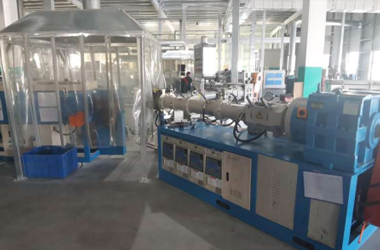Car Door Weatherstripping for Improved Insulation and Noise Reduction
Understanding Car Door Seals Importance, Types, and Maintenance
Car door seals, often overlooked, play a critical role in ensuring the comfort, safety, and overall performance of a vehicle. These seals, typically made of rubber or other flexible materials, are designed to fit snugly around the door frames of automobiles. Their primary function is to create a tight barrier between the car interior and the external environment. Understanding the importance of these seals and their maintenance can significantly enhance your driving experience.
Importance of Car Door Seals
1. Noise Reduction One of the primary roles of car door seals is to minimize external noise. Whether you’re driving on a busy highway or through a noisy urban landscape, effective seals help to maintain a quieter cabin, enabling a more pleasant ride for both the driver and passengers.
2. Temperature Control Car door seals prevent the intrusion of outside air, helping to maintain the desired internal temperature, whether you are using the air conditioning in hot weather or the heater in cold conditions. Leaky seals can lead to a significant loss of efficiency in your HVAC system, resulting in discomfort and higher fuel consumption.
3. Water and Dust Protection Properly sealed doors prevent water, dust, and other contaminants from entering the vehicle. This is especially important in protecting the car’s interior and electronic components from moisture damage, which can lead to rust and malfunctions over time.
4. Safety and Security Good seals contribute to the overall structural integrity of the vehicle. In the event of an accident, they help maintain the cabin's rigidity and protect occupants. Furthermore, they prevent unauthorized access and tampering with the vehicle.
Types of Car Door Seals
Car door seals come in various forms, and understanding the differences can aid in identifying the right type for your vehicle
1. Compression Seals These seals work by compressing against the door frame when closed, creating a tight seal that blocks noise and air.
2. Felt Seals Often used in older vehicles, felt seals can provide noise reduction but may not offer the same level of water resistance as rubber seals.
car door seal

3. Weatherstripping A common material used for door seals, weatherstripping is versatile and can be applied in different areas of the vehicle (doors, windows, trunk) to enhance sealing.
4. Foam Seals These are softer and usually more pliable, allowing them to fit snugly in irregular spaces. They can be a cost-effective solution for general sealing purposes.
Maintenance of Car Door Seals
To ensure the longevity and effectiveness of car door seals, regular maintenance is essential. Here are some tips to consider
1. Regular Inspection Periodically check the seals for any signs of wear and tear, cracks, or brittleness. Early detection of damage can prevent further issues and more costly repairs.
2. Cleaning Keep the seals clean and free from dirt and debris. Accumulation of grime can lead to breakdowns in seal integrity. Use a mild soap solution and gently clean the seals with a soft cloth.
3. Conditioning Applying a silicone-based spray or rubber conditioner to the seals can help maintain their flexibility and prevent cracking, especially in extreme weather conditions. Avoid petroleum-based products, as they can degrade rubber.
4. Replacement If the seals are significantly damaged, replacement is necessary. Check your vehicle’s manual or consult with a professional to ensure you get the correct type of seal for your model.
Conclusion
Car door seals are a small yet vital component of your vehicle. By understanding their functions, types, and maintenance needs, you can ensure a more comfortable ride, preserve your car’s interior, and extend the life of your vehicle. Next time you step into your car, take a moment to appreciate the work these seals do and consider taking the necessary steps to care for them properly. Their significance goes beyond mere aesthetics; it contributes to your safety, comfort, and vehicle performance.
-
Under Door Draught Stopper: Essential ProtectionNewsJul.31,2025
-
Garage Door Seal and Weatherstrips for ProtectionNewsJul.31,2025
-
Edge Banding Tape for Perfect EdgesNewsJul.31,2025
-
Table Corner Guards and Wall Corner ProtectorsNewsJul.31,2025
-
Stair Nose Edging Trim and Tile Stair SolutionsNewsJul.31,2025
-
Truck Bed Rubber Mats for Pickup BedsNewsJul.31,2025
-
Window Weather Stripping for Noise ReductionNewsJul.29,2025